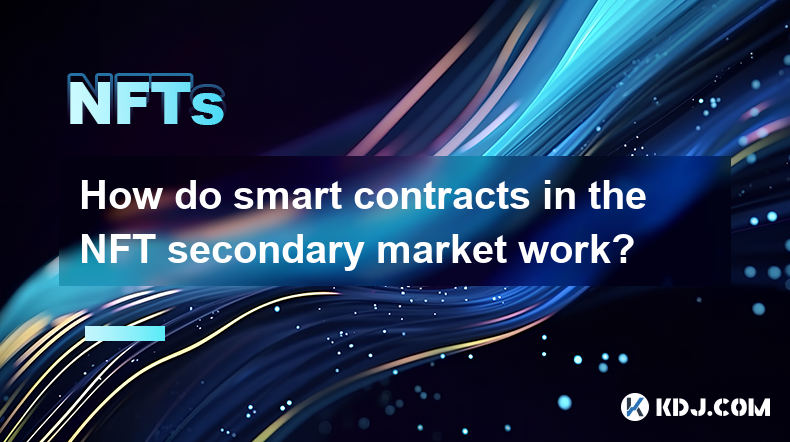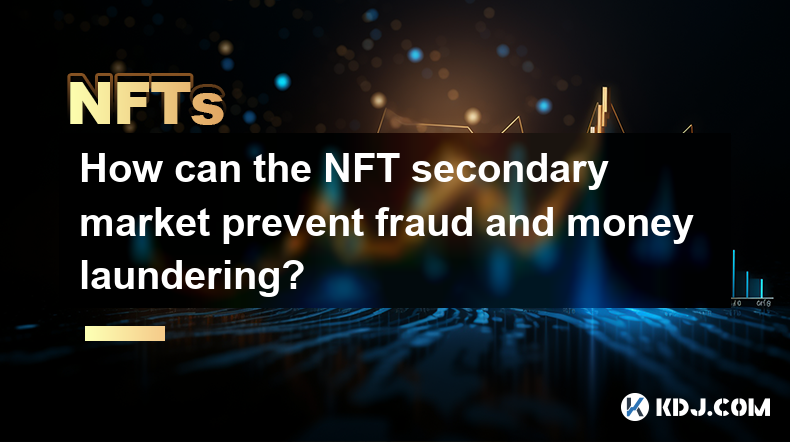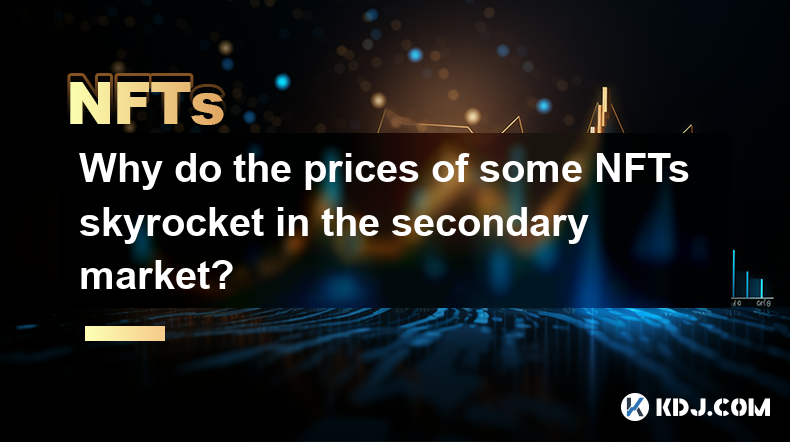-
 Bitcoin
Bitcoin $80,117.6541
1.53% -
 Ethereum
Ethereum $1,577.2032
-1.73% -
 Tether USDt
Tether USDt $0.9996
0.01% -
 XRP
XRP $1.9007
-1.41% -
 BNB
BNB $558.6668
-0.70% -
 USDC
USDC $0.9998
-0.05% -
 Solana
Solana $109.7570
2.66% -
 Dogecoin
Dogecoin $0.1512
0.66% -
 TRON
TRON $0.2301
-0.66% -
 Cardano
Cardano $0.5934
2.24% -
 UNUS SED LEO
UNUS SED LEO $8.9402
0.76% -
 Toncoin
Toncoin $3.0874
4.65% -
 Chainlink
Chainlink $11.5972
1.59% -
 Stellar
Stellar $0.2333
2.34% -
 Avalanche
Avalanche $17.1114
5.39% -
 Shiba Inu
Shiba Inu $0.0...01153
0.51% -
 Sui
Sui $2.0583
6.07% -
 Hedera
Hedera $0.1531
7.99% -
 MANTRA
MANTRA $6.3146
3.68% -
 Polkadot
Polkadot $3.6261
-1.81% -
 Bitcoin Cash
Bitcoin Cash $278.1372
1.06% -
 Litecoin
Litecoin $71.4524
0.64% -
 Dai
Dai $1.0000
-0.02% -
 Ethena USDe
Ethena USDe $0.9989
0.00% -
 Bitget Token
Bitget Token $4.2256
1.97% -
 Pi
Pi $0.5840
-2.20% -
 Hyperliquid
Hyperliquid $11.8697
11.62% -
 Monero
Monero $204.1857
1.76% -
 Uniswap
Uniswap $5.1857
-0.09% -
 OKB
OKB $51.2256
-3.47%
What is the liquidity of the NFT secondary market?
Liquidity in the NFT secondary market is influenced by demand, platform, and market trends, with high liquidity leading to stable prices and quick sales.
Apr 08, 2025 at 01:29 am

The liquidity of the NFT secondary market refers to the ease with which Non-Fungible Tokens (NFTs) can be bought and sold after their initial sale. Liquidity is a critical factor in any market, as it affects how quickly and efficiently assets can be converted into cash. In the context of NFTs, liquidity determines the speed at which an NFT can be sold and at what price. High liquidity means that there are many buyers and sellers, leading to tighter bid-ask spreads and more stable prices. Conversely, low liquidity can result in larger price fluctuations and difficulty in selling NFTs at desired prices.
Factors Affecting NFT Secondary Market Liquidity
Several factors influence the liquidity of the NFT secondary market. Firstly, the popularity and demand for a particular NFT collection can significantly affect its liquidity. Collections with a strong following and active community tend to have higher liquidity due to increased trading volume. Secondly, the platform on which the NFTs are traded plays a crucial role. Platforms like OpenSea, Rarible, and SuperRare have different levels of user engagement and transaction volumes, which impact liquidity. Lastly, market conditions and trends can also sway liquidity. Bullish markets often lead to higher liquidity as more investors are willing to buy and trade NFTs.
Measuring Liquidity in the NFT Secondary Market
To measure liquidity in the NFT secondary market, several metrics can be used. Trading volume is a primary indicator, showing the total number of NFTs traded over a specific period. High trading volumes generally indicate higher liquidity. Bid-ask spread is another crucial metric, representing the difference between the highest price a buyer is willing to pay and the lowest price a seller is willing to accept. A narrower spread suggests higher liquidity. Time to sale is also an important measure, indicating how long it takes for an NFT to be sold after being listed. Shorter times to sale reflect higher liquidity.
Challenges to Liquidity in the NFT Secondary Market
Despite the growth of the NFT market, several challenges can hinder liquidity. High transaction fees can deter frequent trading, reducing liquidity. These fees can include platform fees, gas fees on blockchain networks like Ethereum, and other costs associated with buying and selling NFTs. Lack of standardization across different NFT platforms and collections can also create liquidity issues. Each platform may have its own set of rules and processes, making it difficult for buyers and sellers to navigate the market efficiently. Market volatility is another challenge, as rapid price changes can lead to uncertainty and hesitancy among traders, reducing overall liquidity.
Strategies to Improve NFT Secondary Market Liquidity
To enhance liquidity in the NFT secondary market, several strategies can be employed. Reducing transaction fees can encourage more trading activity. Some platforms are exploring ways to lower fees or offer fee waivers to boost liquidity. Increasing market education and awareness can also help, as more informed buyers and sellers are likely to engage more actively in the market. Standardizing practices across platforms can streamline the trading process and make it easier for users to buy and sell NFTs. Additionally, leveraging technology such as layer-2 solutions and faster blockchain networks can improve transaction speeds and reduce costs, thereby enhancing liquidity.
Case Studies: Examples of Liquidity in the NFT Secondary Market
To better understand liquidity in the NFT secondary market, let's look at a few case studies. CryptoPunks, one of the earliest and most popular NFT collections, has consistently high liquidity due to its strong community and high demand. The trading volume for CryptoPunks often remains high, with quick sales and narrow bid-ask spreads. On the other hand, smaller, niche collections may struggle with liquidity. These collections often have lower trading volumes and longer times to sale, reflecting lower liquidity. Art Blocks, a platform known for its generative art NFTs, has seen varying levels of liquidity depending on the popularity of specific projects. High-profile drops on Art Blocks can lead to surges in liquidity, while less popular projects may see reduced trading activity.
The Role of Marketplaces in NFT Secondary Market Liquidity
Marketplaces play a pivotal role in the liquidity of the NFT secondary market. OpenSea, the largest NFT marketplace, has a significant impact on liquidity due to its large user base and high trading volumes. OpenSea's user-friendly interface and wide range of supported NFTs contribute to its high liquidity. Rarible and SuperRare also influence liquidity, though to a lesser extent due to their more specialized focus. Rarible's community governance model and SuperRare's emphasis on curated art NFTs can affect liquidity in different ways. NFTX, a platform that allows users to create and trade NFT index funds, introduces another layer of liquidity by enabling fractional ownership of NFT collections, potentially increasing overall market liquidity.
The Impact of Blockchain Technology on NFT Secondary Market Liquidity
Blockchain technology is fundamental to the operation and liquidity of the NFT secondary market. Ethereum, the most commonly used blockchain for NFTs, has both positive and negative impacts on liquidity. On the positive side, Ethereum's widespread adoption and robust infrastructure support a high volume of NFT transactions. However, high gas fees on Ethereum can be a significant barrier to liquidity, as they increase the cost of trading. Layer-2 solutions like Polygon and Immutable X are being adopted to address these issues, offering faster and cheaper transactions that can enhance liquidity. Other blockchains such as Solana and Flow are also gaining traction in the NFT space, with their lower transaction costs and faster processing times potentially improving liquidity in the secondary market.
The Influence of Economic Factors on NFT Secondary Market Liquidity
Economic factors can significantly influence the liquidity of the NFT secondary market. Macroeconomic conditions, such as inflation rates and economic growth, can affect investor sentiment and willingness to engage in the NFT market. During periods of economic uncertainty, investors may be more cautious, leading to reduced liquidity. Interest rates also play a role, as higher rates can make borrowing more expensive, potentially reducing the funds available for NFT investments. Cryptocurrency market trends, particularly the performance of major cryptocurrencies like Bitcoin and Ethereum, can impact NFT liquidity. A bullish crypto market often leads to increased interest and investment in NFTs, boosting liquidity. Conversely, a bearish market can lead to reduced trading activity and lower liquidity.
The Role of Speculation in NFT Secondary Market Liquidity
Speculation is a significant driver of liquidity in the NFT secondary market. Speculative buying and selling can lead to high trading volumes and rapid price movements, contributing to liquidity. Many investors buy NFTs with the expectation of selling them at a higher price in the future, which can drive up demand and liquidity. However, over-speculation can also lead to market bubbles and subsequent crashes, which can negatively impact liquidity. When speculative fervor cools down, trading volumes can drop, and liquidity can suffer. Balancing speculation with more stable, long-term investment strategies can help maintain healthy liquidity levels in the NFT secondary market.
The Impact of Regulatory Developments on NFT Secondary Market Liquidity
Regulatory developments can have a profound impact on the liquidity of the NFT secondary market. Clear and favorable regulations can boost investor confidence and increase liquidity by providing a more stable and predictable environment for trading. Conversely, stringent or unclear regulations can deter investors and reduce liquidity. For example, if regulators classify certain NFTs as securities, it could lead to increased compliance costs and reduced trading activity. International regulatory differences can also affect liquidity, as investors may prefer to trade in jurisdictions with more favorable regulatory environments. Keeping abreast of regulatory changes and advocating for clear and supportive policies can help maintain and enhance liquidity in the NFT secondary market.
The Future of Liquidity in the NFT Secondary Market
The future of liquidity in the NFT secondary market is likely to be influenced by several key trends. Increased adoption of NFTs across various industries, from art and gaming to real estate and finance, could lead to higher liquidity as more people engage with the market. Technological advancements, such as the development of more efficient blockchain networks and the integration of NFTs into decentralized finance (DeFi) platforms, could also enhance liquidity. Greater institutional involvement in the NFT market may bring more stability and liquidity, as institutional investors often have larger capital pools and longer investment horizons. However, market maturity and the establishment of best practices will be crucial in ensuring sustainable liquidity in the NFT secondary market.
Common Questions Related to NFT Secondary Market Liquidity
Q: What is liquidity in the context of the NFT secondary market?
A: Liquidity in the NFT secondary market refers to the ease with which NFTs can be bought and sold after their initial sale. High liquidity means there are many buyers and sellers, leading to quick transactions and stable prices, while low liquidity can result in slower sales and more significant price fluctuations.
Q: What factors affect the liquidity of the NFT secondary market?
A: Several factors affect NFT secondary market liquidity, including the popularity and demand for specific NFT collections, the platform on which the NFTs are traded, and overall market conditions and trends. High demand and active trading platforms generally lead to higher liquidity.
Q: How can liquidity in the NFT secondary market be measured?
A: Liquidity in the NFT secondary market can be measured using metrics such as trading volume, bid-ask spread, and time to sale. High trading volumes, narrow bid-ask spreads, and short times to sale indicate higher liquidity.
Q: What are some challenges to liquidity in the NFT secondary market?
A: Challenges to liquidity in the NFT secondary market include high transaction fees, lack of standardization across platforms, and market volatility. These factors can deter trading activity and reduce overall liquidity.
Q: What strategies can be used to improve liquidity in the NFT secondary market?
A: Strategies to improve liquidity include reducing transaction fees, increasing market education and awareness, standardizing practices across platforms, and leveraging technology to improve transaction speeds and reduce costs.
Q: Can you provide examples of liquidity in the NFT secondary market?
A: Examples of liquidity in the NFT secondary market include CryptoPunks, which has high liquidity due to strong demand and community engagement, and smaller, niche collections, which may struggle with liquidity due to lower trading volumes. Art Blocks also shows varying levels of liquidity depending on the popularity of specific projects.
Q: How do marketplaces influence liquidity in the NFT secondary market?
A: Marketplaces like OpenSea, Rarible, and SuperRare significantly influence liquidity in the NFT secondary market. OpenSea's large user base and high trading volumes contribute to high liquidity, while specialized platforms like Rarible and SuperRare can affect liquidity based on their focus and user engagement.
Q: What role does blockchain technology play in NFT secondary market liquidity?
A: Blockchain technology, particularly Ethereum, is fundamental to NFT secondary market liquidity. While Ethereum's widespread adoption supports high transaction volumes, high gas fees can hinder liquidity. Layer-2 solutions and other blockchains like Solana and Flow are being used to improve transaction efficiency and liquidity.
Q: How do economic factors impact NFT secondary market liquidity?
A: Economic factors such as macroeconomic conditions, interest rates, and cryptocurrency market trends can significantly impact NFT secondary market liquidity. Bullish economic and crypto market conditions often lead to increased liquidity, while bearish conditions can reduce trading activity and liquidity.
Q: What is the role of speculation in NFT secondary market liquidity?
A: Speculation drives liquidity in the NFT secondary market by increasing trading volumes and price movements. However, over-speculation can lead to market bubbles and subsequent liquidity drops. Balancing speculation with long-term investment strategies can help maintain healthy liquidity levels.
Q: How do regulatory developments affect NFT secondary market liquidity?
A: Regulatory developments can impact NFT secondary market liquidity by either boosting investor confidence with clear and favorable regulations or deterring investors with stringent or unclear rules. International regulatory differences can also influence where investors choose to trade, affecting liquidity.
Q: What does the future hold for liquidity in the NFT secondary market?
A: The future of liquidity in the NFT secondary market may see increased adoption across industries, technological advancements, and greater institutional involvement, all of which could enhance liquidity. However, market maturity and the establishment of best practices will be crucial for sustainable liquidity.
Disclaimer:info@kdj.com
The information provided is not trading advice. kdj.com does not assume any responsibility for any investments made based on the information provided in this article. Cryptocurrencies are highly volatile and it is highly recommended that you invest with caution after thorough research!
If you believe that the content used on this website infringes your copyright, please contact us immediately (info@kdj.com) and we will delete it promptly.
- The sane person's guide to investing in cryptocurrency
- 2025-04-08 09:15:11
- BTFD Coin (BTFD): One Stage Away From Rocket Mode
- 2025-04-08 09:15:11
- Upcoming Ethereum Pectra Update May Be a Launchpad for These 4 Tokens
- 2025-04-08 09:10:12
- Dogecoin (DOGE) Shows Signs of a Potential Bullish Trend Following a Significant 16% Price Recovery
- 2025-04-08 09:10:12
- Michael Saylor, Bitcoin evangelist and founder of the BTC-powered company Strategy, has published a bullish BTC statement
- 2025-04-08 09:05:12
- Dogecoin (DOGE) Eyes New Bullish Trend Amid Market Recovery
- 2025-04-08 09:05:12
Related knowledge

How do smart contracts in the NFT secondary market work?
Apr 03,2025 at 07:14am
Smart contracts play a pivotal role in the NFT secondary market, facilitating seamless transactions and enforcing predefined rules. These self-executing contracts with the terms of the agreement directly written into code are stored on the blockchain. In the context of NFTs, smart contracts automate the buying, selling, and transferring of digital asset...

How can the NFT secondary market prevent fraud and money laundering?
Apr 03,2025 at 08:35am
The NFT secondary market has become a thriving hub for digital art and collectibles, but it also faces challenges in preventing fraud and money laundering. To tackle these issues, the market can implement various strategies and technologies to ensure a safer and more transparent trading environment. This article will explore how the NFT secondary market...

How are transaction fees in the NFT secondary market calculated?
Apr 04,2025 at 05:28am
The calculation of transaction fees in the NFT secondary market is a crucial aspect that both buyers and sellers need to understand. These fees can significantly impact the overall cost of transactions and the profits that sellers can make. In this article, we will delve into the various components that make up these fees, how they are calculated, and w...

Why do the prices of some NFTs skyrocket in the secondary market?
Apr 06,2025 at 07:08am
The phenomenon of NFT prices skyrocketing in the secondary market is a fascinating aspect of the cryptocurrency and digital art world. Non-Fungible Tokens (NFTs) have taken the digital world by storm, and their value can surge dramatically after initial sales. Several factors contribute to this price surge, including rarity, demand, speculation, and the...

What is the liquidity of the NFT secondary market?
Apr 08,2025 at 01:29am
The liquidity of the NFT secondary market refers to the ease with which Non-Fungible Tokens (NFTs) can be bought and sold after their initial sale. Liquidity is a critical factor in any market, as it affects how quickly and efficiently assets can be converted into cash. In the context of NFTs, liquidity determines the speed at which an NFT can be sold a...

How does the NFT secondary market ensure transaction transparency?
Apr 07,2025 at 09:15pm
The NFT secondary market plays a crucial role in the cryptocurrency ecosystem by allowing users to buy, sell, and trade non-fungible tokens (NFTs) after their initial sale. Ensuring transaction transparency in this market is vital for maintaining trust and integrity among participants. Transparency in the NFT secondary market is achieved through a combi...

How do smart contracts in the NFT secondary market work?
Apr 03,2025 at 07:14am
Smart contracts play a pivotal role in the NFT secondary market, facilitating seamless transactions and enforcing predefined rules. These self-executing contracts with the terms of the agreement directly written into code are stored on the blockchain. In the context of NFTs, smart contracts automate the buying, selling, and transferring of digital asset...

How can the NFT secondary market prevent fraud and money laundering?
Apr 03,2025 at 08:35am
The NFT secondary market has become a thriving hub for digital art and collectibles, but it also faces challenges in preventing fraud and money laundering. To tackle these issues, the market can implement various strategies and technologies to ensure a safer and more transparent trading environment. This article will explore how the NFT secondary market...

How are transaction fees in the NFT secondary market calculated?
Apr 04,2025 at 05:28am
The calculation of transaction fees in the NFT secondary market is a crucial aspect that both buyers and sellers need to understand. These fees can significantly impact the overall cost of transactions and the profits that sellers can make. In this article, we will delve into the various components that make up these fees, how they are calculated, and w...

Why do the prices of some NFTs skyrocket in the secondary market?
Apr 06,2025 at 07:08am
The phenomenon of NFT prices skyrocketing in the secondary market is a fascinating aspect of the cryptocurrency and digital art world. Non-Fungible Tokens (NFTs) have taken the digital world by storm, and their value can surge dramatically after initial sales. Several factors contribute to this price surge, including rarity, demand, speculation, and the...

What is the liquidity of the NFT secondary market?
Apr 08,2025 at 01:29am
The liquidity of the NFT secondary market refers to the ease with which Non-Fungible Tokens (NFTs) can be bought and sold after their initial sale. Liquidity is a critical factor in any market, as it affects how quickly and efficiently assets can be converted into cash. In the context of NFTs, liquidity determines the speed at which an NFT can be sold a...

How does the NFT secondary market ensure transaction transparency?
Apr 07,2025 at 09:15pm
The NFT secondary market plays a crucial role in the cryptocurrency ecosystem by allowing users to buy, sell, and trade non-fungible tokens (NFTs) after their initial sale. Ensuring transaction transparency in this market is vital for maintaining trust and integrity among participants. Transparency in the NFT secondary market is achieved through a combi...
See all articles





















































































